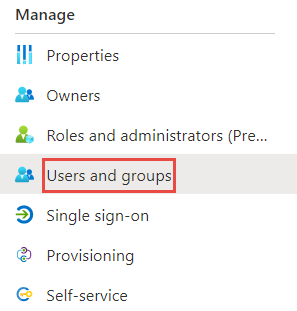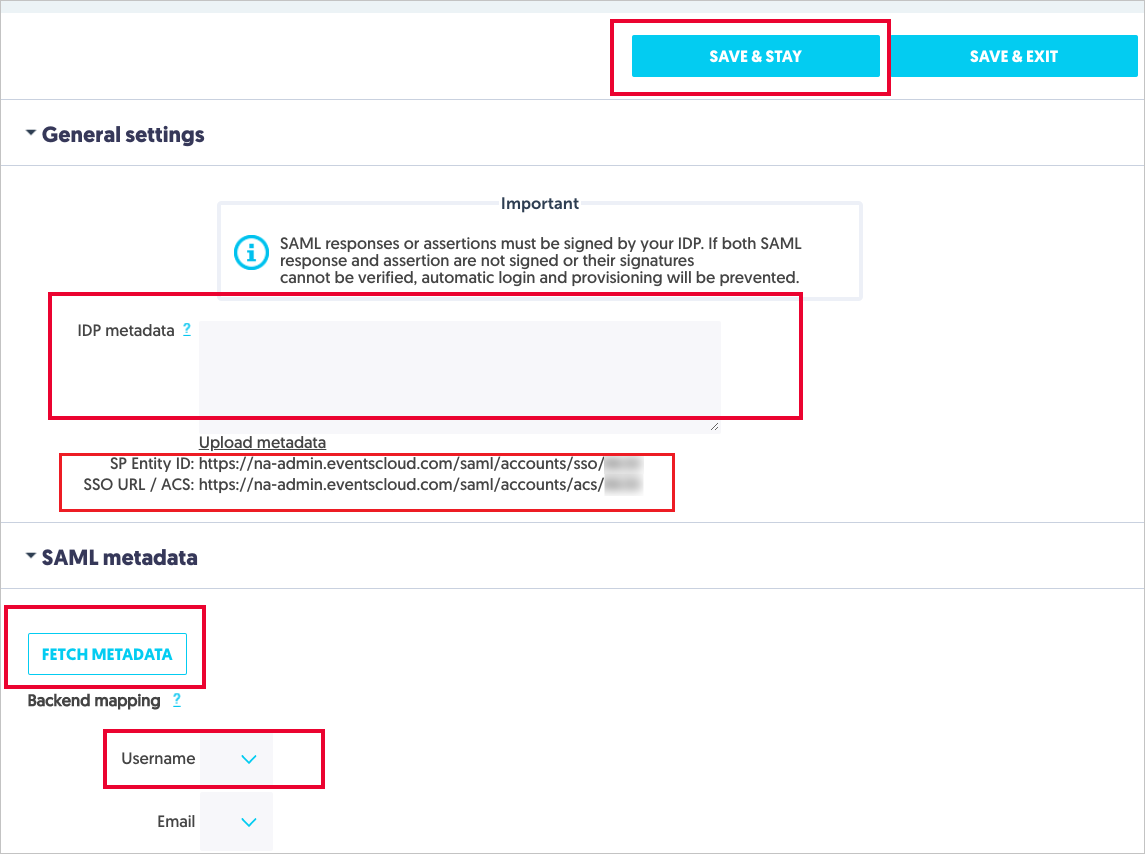Tutorial: Microsoft Entra single sign-on (SSO) integration with Aventri
In this tutorial, you'll learn how to integrate Aventri with Microsoft Entra ID. When you integrate Aventri with Microsoft Entra ID, you can:
- Control in Microsoft Entra ID who has access to Aventri.
- Enable your users to be automatically signed-in to Aventri with their Microsoft Entra accounts.
- Manage your accounts in one central location.
To learn more about SaaS app integration with Microsoft Entra ID, see What is application access and single sign-on with Microsoft Entra ID.
Prerequisites
To get started, you need the following items:
- A Microsoft Entra subscription. If you don't have a subscription, you can get a free account.
- Aventri single sign-on (SSO) enabled subscription.
Scenario description
In this tutorial, you configure and test Microsoft Entra SSO in a test environment.
- Aventri supports SP initiated SSO
- Once you configure Aventri you can enforce Session Control, which protect exfiltration and infiltration of your organization’s sensitive data in real-time. Session Control extend from Conditional Access. Learn how to enforce session control with Microsoft Defender for Cloud Apps.
Adding Aventri from the gallery
To configure the integration of Aventri into Microsoft Entra ID, you need to add Aventri from the gallery to your list of managed SaaS apps.
- Sign in to the Microsoft Entra admin center as at least a Cloud Application Administrator.
- Browse to Identity > Applications > Enterprise applications > New application.
- In the Add from the gallery section, type Aventri in the search box.
- Select Aventri from results panel and then add the app. Wait a few seconds while the app is added to your tenant.
Alternatively, you can also use the Enterprise App Configuration Wizard. In this wizard, you can add an application to your tenant, add users/groups to the app, assign roles, as well as walk through the SSO configuration as well. Learn more about Microsoft 365 wizards.
Configure and test Microsoft Entra single sign-on for Aventri
Configure and test Microsoft Entra SSO with Aventri using a test user called B.Simon. For SSO to work, you need to establish a link relationship between a Microsoft Entra user and the related user in Aventri.
To configure and test Microsoft Entra SSO with Aventri, complete the following building blocks:
- Configure Microsoft Entra SSO - to enable your users to use this feature.
- Create a Microsoft Entra test user - to test Microsoft Entra single sign-on with B.Simon.
- Assign the Microsoft Entra test user - to enable B.Simon to use Microsoft Entra single sign-on.
- Configure Aventri SSO - to configure the single sign-on settings on application side.
- Create Aventri test user - to have a counterpart of B.Simon in Aventri that is linked to the Microsoft Entra representation of user.
- Test SSO - to verify whether the configuration works.
Configure Microsoft Entra SSO
Follow these steps to enable Microsoft Entra SSO.
Sign in to the Microsoft Entra admin center as at least a Cloud Application Administrator.
Browse to Identity > Applications > Enterprise applications > Aventri > Single sign-on.
On the Select a single sign-on method page, select SAML.
On the Set up single sign-on with SAML page, click the edit/pen icon for Basic SAML Configuration to edit the settings.

On the Basic SAML Configuration section, enter the values for the following fields:
a. In the Sign on URL text box, type a URL using the following pattern:
https://na-admin.eventscloud.com/saml/accounts/acs/<ACCOUNTID>b. In the Identifier (Entity ID) text box, type a URL using the following pattern:
https://na-admin.eventscloud.com/saml/accounts/sso/<ACCOUNTID>Note
These values are not real. You update the value with the actual Sign on URL and Identifier, which is explained later in the tutorial.
Aventri application expects the SAML assertions in a specific format, which requires you to add custom attribute mappings to your SAML token attributes configuration. The following screenshot shows the list of default attributes.

In addition to above, Aventri application expects few more attributes to be passed back in SAML response which are shown below. These attributes are also pre populated but you can review them as per your requirement.
Name Source Attribute Email user.mail On the Set up single sign-on with SAML page, in the SAML Signing Certificate section, find Federation Metadata XML and select Download to download the certificate and save it on your computer.

On the Set up Aventri section, copy the appropriate URL(s) based on your requirement.

Create a Microsoft Entra test user
In this section, you'll create a test user called B.Simon.
- Sign in to the Microsoft Entra admin center as at least a User Administrator.
- Browse to Identity > Users > All users.
- Select New user > Create new user, at the top of the screen.
- In the User properties, follow these steps:
- In the Display name field, enter
B.Simon. - In the User principal name field, enter the username@companydomain.extension. For example,
B.Simon@contoso.com. - Select the Show password check box, and then write down the value that's displayed in the Password box.
- Select Review + create.
- In the Display name field, enter
- Select Create.
Assign the Microsoft Entra test user
In this section, you'll enable B.Simon to use single sign-on by granting access to Aventri.
Sign in to the Microsoft Entra admin center as at least a Cloud Application Administrator.
Browse to Identity > Applications > Enterprise applications > Aventri.
In the app's overview page, find the Manage section and select Users and groups.

Select Add user, then select Users and groups in the Add Assignment dialog.

In the Users and groups dialog, select B.Simon from the Users list, then click the Select button at the bottom of the screen.
If you're expecting any role value in the SAML assertion, in the Select Role dialog, select the appropriate role for the user from the list and then click the Select button at the bottom of the screen.
In the Add Assignment dialog, click the Assign button.
Configure Aventri SSO
To get SSO configured for your application, perform the following steps in the Aventri application:

a. Sign in to Aventri application using the Admin rights.
b. Go to the SAML Configuration.
c. In the General Settings section, open your downloaded certificate from Azure portal in notepad, copy the content, and then paste it into the IDP metadata textbox.
d. Click on the Save & Stay button.
e. Click on the Update Metadata button in the SAML Metadata section.
f. This opens the page and performs SSO. Once the SSO is working then you can set up the username.
g. In the Username field, select the emailaddress as shown in the image below.
h. Copy the SP entity ID value and paste it into the Identifier textbox, which is in Basic SAML Configuration section.
i. Copy the SSO URL / ACS value and paste it into the Sign-on URL textbox, which is in Basic SAML Configuration section.
Create Aventri test user
In this section, you create a user called B.Simon in Aventri. Work with Aventri Client support team to add the users in the Aventri platform.
Test SSO
In this section, you test your Microsoft Entra single sign-on configuration using the Access Panel.
When you click the Aventri tile in the Access Panel, you should be automatically signed in to the Aventri for which you set up SSO. For more information about the Access Panel, see Introduction to the Access Panel.
Additional resources
Feedback
Coming soon: Throughout 2024 we will be phasing out GitHub Issues as the feedback mechanism for content and replacing it with a new feedback system. For more information see: https://aka.ms/ContentUserFeedback.
Submit and view feedback for